Agents of Good
Meet seven alumni working for a better world.
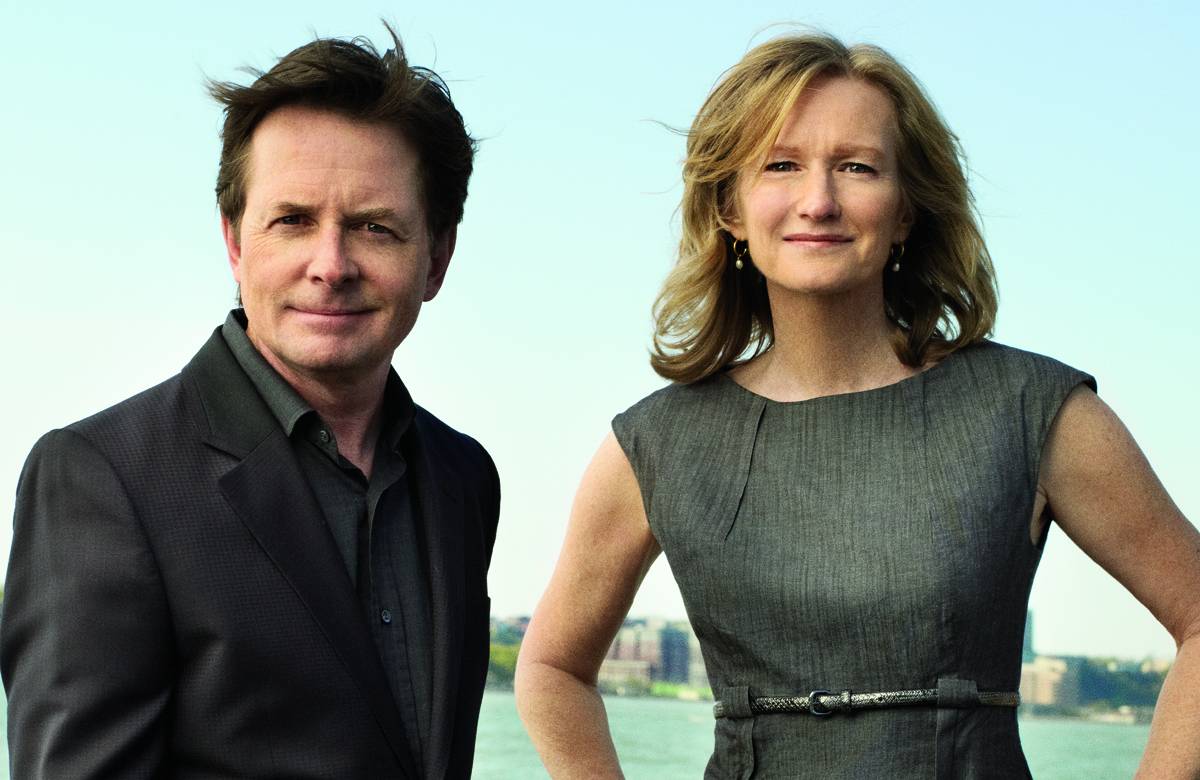
Altruism is the highest and best form of egoism. Edward Tuck said it, and for more than a century our graduates have lived it. Meet seven alumni who are working for a better world.
DEBI BROOKS T’86
Michael J. Fox Foundation for Parkinson’s Research
Debi Brooks T’86 didn’t set out to become a leader in the fight against Parkinson’s disease. She didn’t know anyone with Parkinson’s, and had no background in medical research. But she recognized a unique opportunity to make a difference. “I was really drawn to the idea of starting something from scratch with far better than average ingredients,” says Brooks, co-founder and executive vice chairman of The Michael J. Fox Foundation for Parkinson’s Research.
In 1998, television and film star Michael J. Fox had gone public with his diagnosis of young-onset Parkinson’s disease. Two years later he announced that he would leave his role in the hit sitcom “Spin City” to promote Parkinson’s research. He had decided to start a foundation to help search for a cure, and wanted someone with a business background to help him build it.
Brooks, who was transitioning to the nonprofit world after nine years on Wall Street, heard about the job from an old Goldman Sachs colleague on a Sunday, and interviewed with Fox that Thursday. Afterwards Fox followed her into the elevator at the old Bear Stearns building, like one of the hard-charging characters he plays on television.
“He came and stood next to me and said, ‘Do you mind if I ride down with you?’” Brooks recalls. “We went outside and talked for another half hour, and he said, ‘You’re the one. You have to do this.’”
The following Monday morning she set up a desk in an empty corner of the “Spin City” production offices, and went to work.
With Fox and others, Brooks turned those promising ingredients into the organization that The New York Times hails as “the most credible voice on Parkinson’s research in the world.” The Michael J. Fox Foundation has now funded more than $400 million in Parkinson’s drug development. It is the largest nonprofit supporter of Parkinson’s research in the world.
Brooks served as the foundation’s CEO for more than seven years before transitioning to her current role as executive vice chairman. Under her leadership the foundation has earned a reputation for efficiency, consistently directing about 90 cents of every dollar to core research. Brooks is proud of that figure, but cautions that it is a superficial measure of the organization’s effectiveness.
“The question I tell donors they should ask me is not, ‘What’s my ratio?’ It's, ‘What do I do with the 90 cents?’” she says. That is often the point in the conversation when donors, who may have assumed that Brooks is a lawyer or physician, recognize that she trained in business. “That gets to the core of why people support us, particularly our largest donors,” Brooks says. “Tuck gave me the tools to think this way.”
From the beginning, Brooks didn’t see the role of the Fox Foundation as funding research. She saw its mission as accelerating the development of new drugs through the research it funds. That means employing a strategy that complements the better-capitalized efforts of government and the pharmaceutical industry.
Often, the Fox Foundation will support basic research that has great promise, but more risk than others are willing to accept. “If you do something with your capital that is smart, but that no one else is willing to do because of the risk-and-reward profile, you’re actually making a real contribution to the sum of the parts.”
Recent “de-risking” successes include a new inhaled delivery of levodopa (the gold-standard Parkinson’s treatment) being developed by a Massachusetts biotech, Civitas. Following positive results early-stage clinical testing funded by Fox with grants totaling about $1.3 million, the company raised $38 million in follow-on venture capital funding for the next stages of development. Another promising treatment discovered by a team at Vanderbilt University was nurtured through early development by Fox funding of about $5 million. With those results in hand, Vanderbilt secured a partnership with pharma giant Bristol-Myers Squibb for the next stages. (Both of these approaches remain in active development, with the potential for patient-relevant results in the next two to three years.)
“At the Fox Foundation we look for novel approaches to accelerating new therapies,” Brooks says. “Whether it’s taking a risk on a new drug or delegating resources to foster collaborations, we know we can move the dial — and it’s a result of this mindset that we’re seeing the best drug development pipeline in decades.”
Andy Grove, a co-founder of Intel and one of the Fox Foundation’s largest donors, helped galvanize that philosophy. “He told me, ‘You have an obligation to behave exponentially differently than everybody else,’” Brooks recalls.
It’s an entrepreneurial approach, one that is designed to produce results. Though the goal of bringing to market a high-impact Parkinson’s treatment remains elusive, Brooks is energized by the progress the foundation has made. “Now that the patient community sees the role that we’re playing, we see a sense of relief when we visit people face to face,” Brooks says. “They can exhale.”
ALAN D. PESKY T’60
Lee Pesky Learning Center
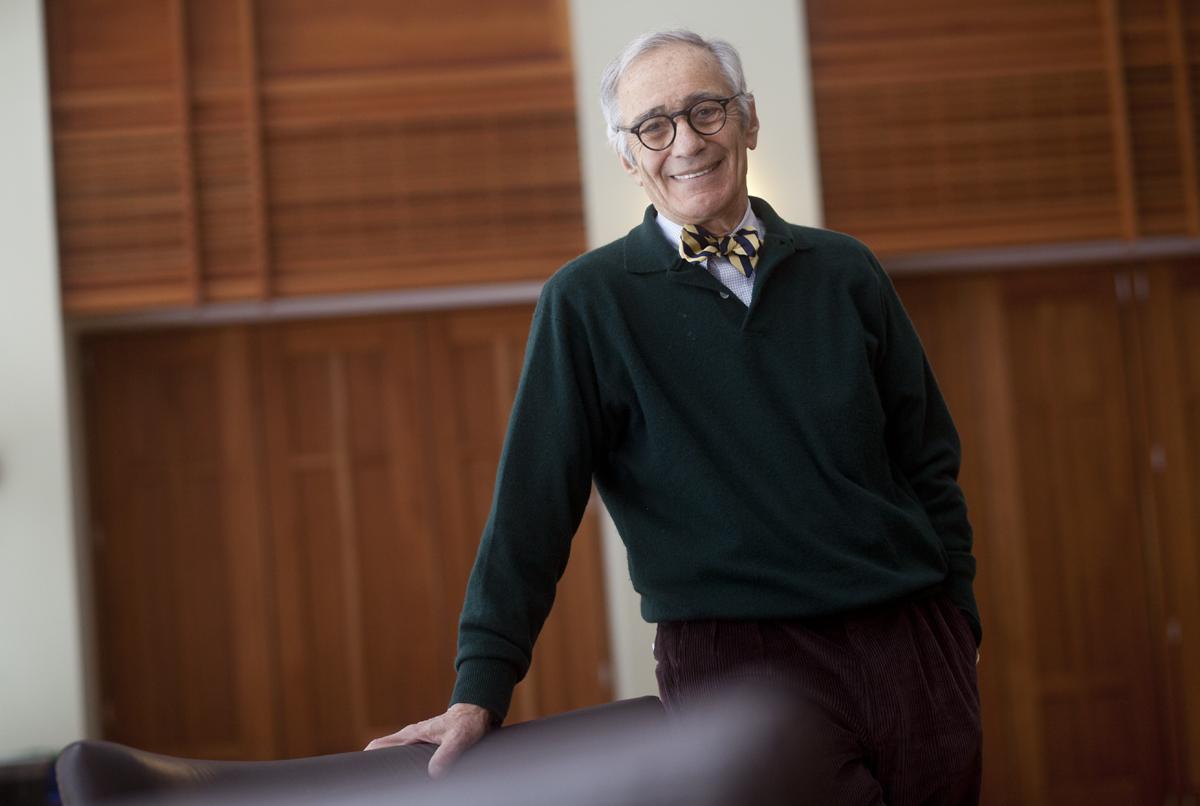
The Peskys’ middle child, Lee, moved west too. Throughout his childhood Lee had struggled mightily with learning disabilities, but he was bright, and with the help of specialists and plenty of hard work, he was able to graduate college and start his own business.
“When he came out to Idaho he started a chain of bagel stores. He called it the Bucking Bagel—the Eastern bagel with the Western kick,” Alan Pesky says, laughing at the memory.
In 1995, when Lee was 30 years old, he rear-ended another driver. Doctors discovered why he had lost control of his car: a massive tumor was growing in his brain.
“Two and a half months after that,” Pesky says, “he passed away.”
The 10 weeks of Lee’s illness were an extraordinary time for Pesky, his wife Wendy, and their two other children. The crisis drew the family closer together and solidified their resolve to honor Lee’s memory. The best way to do that, they decided, was to establish an organization to help learning-disabled children.
Pesky was no stranger to cold starts. In 1967 he and four business associates started their own advertising agency, initially operating from a New York hotel room. Thirteen years later they sold the business to Ogilvy & Mather, and Pesky stayed on as a principal at that firm to direct its international expansion. When he left, the agency had 15 offices around the world.
Pesky also had long experience in the nonprofit sector. He’s a trustee of his alma mater, Lafayette College, and served on the Board of Overseers at Tuck, where he also established the Alan D. Pesky T’60 Scholarship for students who demonstrate a commitment to human rights. As chairman of the Coalition to Free Soviet Jews, he’d lobbied President Reagan and his secretary of state, George Schultz.
After Lee’s death, Pesky directed the entirety of his prodigious energy toward helping others transcend the disability that had challenged Lee. Nothing has consumed him so completely as building the facility that bears his son’s name, the Lee Pesky Learning Center.
“God knows I put every bit as much effort, if not more effort, into this work than I did with my partners in building the advertising agency,” he says. “And I have never had more fulfillment in life than I do right now.”
The Learning Center works to provide all learning-disabled children with the kind of attention that helped Lee overcome his challenges. The organization is nationally known for its efforts in diagnosis, remediation, research, and teacher training.
For the last 13 years, Tuck adjunct professor John Vogel has used the center as a case study in his Entrepreneurship in the Social Sector course. The numbers tell a story of steady growth: from two employees to 32, one location to four, and an annual budget that now exceeds $1.8 million. Pesky, who has been in Vogel’s classroom each of those 13 years, stresses another metric for success.
“My wife was once asked what the Lee Pesky Learning Center means to her, and she said ‘It means that every child who comes to the center and leaves with a smile on their face leaves with a little bit of Lee in them.’”
Pesky, who celebrated his 80th birthday in December, shows no sign of slowing down. Last year he finished the New York marathon with his daughter. It’s a fitting metaphor for the struggle to overcome learning disabilities, which are a lifelong challenge to 20 percent of the population.
“I’ll work seven days a week on this,” Pesky says, “because there is no finish line in what we’re doing.”
DUNCAN MCDOUGALL T’87
Children’s Literacy Foundation (CLiF)
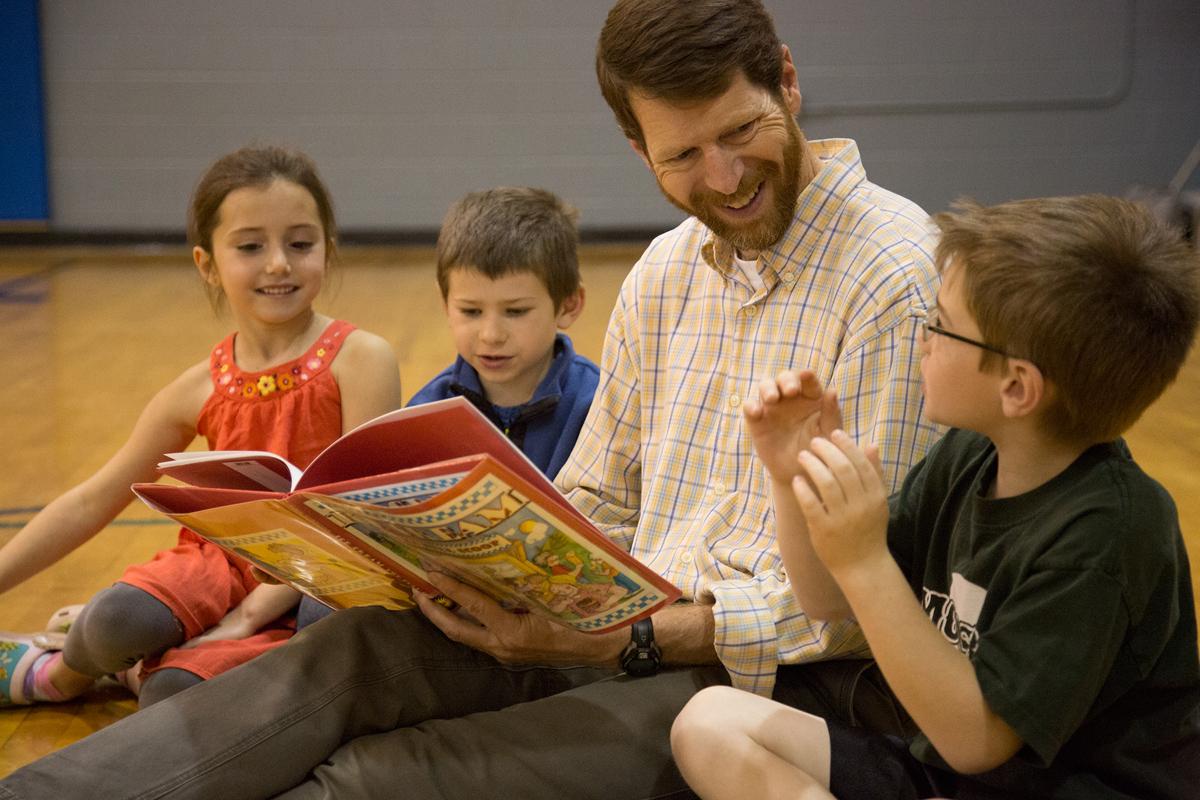
McDougall is the founder and executive director of the Children’s Literacy Foundation (CLiF), a nonprofit organization that aims to inspire a love of reading and writing among low-income, at risk, and rural children in Vermont and New Hampshire. These states need CLiF’s help: roughly a third of low-income elementary school students are not proficient in reading, and more than half are not proficient in writing. Those children are being sentenced to a life of diminished opportunity, McDougall says. CLiF’s model represents a way out. It injects books and literacy programming directly into small towns, schools, low-income housing developments, and shelters, waging on-the-ground campaigns where they’re needed most.
With its Year of the Book program, CLiF gives $25,000 of literacy activities to a rural elementary school and over the course of a year every student selects 10 new books to keep. At one school, children read about dogsledding, wrote their own stories, and then CLiF sent a professional sled-dog team to the school for a demonstration. “The kids got to see the team in action, meet the dogs, and learn how dog teams are managed,” McDougall says. “This rich experience really brings reading alive.”
CLiF’s other flagship offering is Community Literacy, which provides $50,000 worth of literacy support to a town over three years to foster a culture of reading and writing. The money goes toward grants for literacy materials and programs, new books for public and school libraries, visits by local children’s book authors and illustrators, and new books for kids to select. “By the end, children are inspired by stories, reading and writing, and have the resources around them to help move them forward,” McDougall says.
When not shuttling to these remote towns from his home in Waterbury Center, Vt., McDougall is working on the other side of the literacy equation: parents. All told, he has given presentations at 16 state prisons to teach men and women the vital importance of sharing books with their kids. CLiF donates libraries for family visiting rooms, conducts storytelling with inmates and their families, and allows inmates to record themselves reading on MP3 and send the books and recordings home to their kids.
In its 16 years of existence, CLiF has reached more than 150,000 children in 400 towns, and handed out more than $3 million in new books. The Tuck community has played an important role in this achievement, with nine alumni serving on CLiF’s board, and Revers Board Fellows, a consulting team of first-year students, and many donors also providing critical support.
Impressively, CLiF is funded solely through the private donations of more than 600 donors each year. “We’ve never received a penny from state or federal governments,” McDougall says proudly.
JENNIFER WILSON T’99
Make-A-Wish
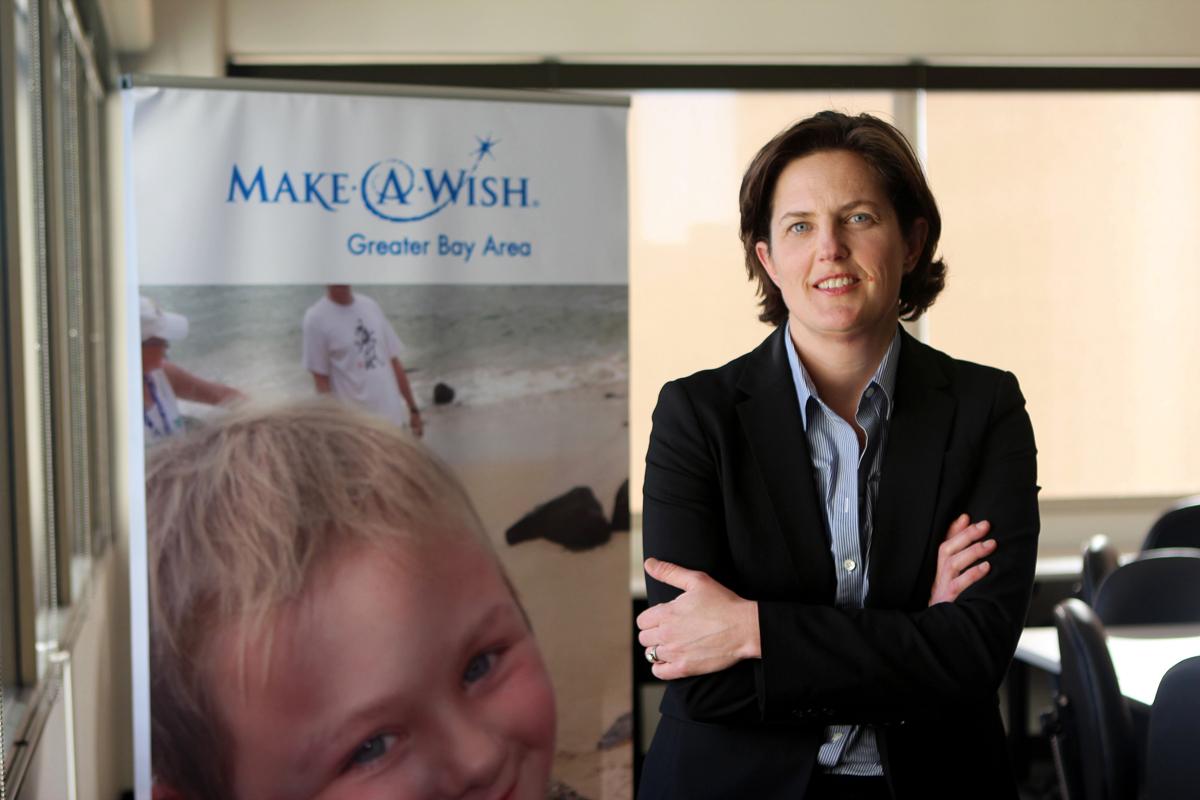
This wasn’t something Jennifer Wilson T’99, the marketing director at the San Francisco-based office, had heard before. “I thought, Maybe he wants to meet Batman,” she said. “That’s a wish we more frequently get.”
Wilson doesn’t recall wondering how she ended up turning a kindergartner into a caped-crusader. You could say it started after college, when she went to work for KQED, the public television and radio station in San Francisco. After five years there, she wanted to bolster her management skills and eventually return to the nonprofit sector. It took a little longer than she thought. Tuck waitlisted her and then admitted her for the following year. After graduation, Wilson had jobs in the frothy dot-com industry of the early 2000s. Then the market began to implode, and Wilson was laid off at about the same time she learned she was pregnant with her first child. A 10-year job as a full-time mom followed. By 2011, “I was ready to go back to work,” she said. She joined Make-A-Wish later that year.
One of the common misperceptions about Make-A-Wish, an international organization with 61 chapters in the U.S., is that it’s for children who have a terminal illness. In fact, 80 percent of kids who receive a wish live into adulthood and beat their disorder. That’s due in part to advances in treatment of childhood cancers, like leukemia. “But the wish is a very important part of their treatment,” Wilson said. “A lot of wishkids say it was a turning point in their life,” Wilson explained, “that it influenced their decision about what they wanted to be, or caused them to reach out and help others.”
Batkid Rises: A Timeline
- February 2013 - Miles Scott makes his wish. “I want to be Batman,” he says. The idea: turn San Francisco into Gotham City and pair Miles with an adult Batman to form a crime-fighting duo.
- March 12 - Volunteers are enlisted to play Batman and the damsel in distress.
- March 19 - San Francisco Chief of Police Greg Suhr agrees to help.
- April 3 - San Francisco Mayor Edwin Lee pledges his support.
- October 11 - Miles Scott finishes his leukemia treatment and is in kindergarten.
- October 23 - Access is granted to Giants Stadium and its Jumbotron so the duo can rescue Giants’ mascot, Lou Seal, from the Penguin. Wilson expects a few hundred people to be at City Hall at the end of the day, where Batkid is to receive the key to the city.
- October 22 - News of the wish is posted on Facebook. Blog posts and social media mentions follow and Batkid goes viral.
- November 4 - Make-A-Wish sets up an online RSVP system to gauge how many people will be at City Hall. Within a week, 8,000 sign up.
- November 7 - Someone in New Jersey starts a Batkid Facebook photo project. Thousands of photos are posted from around the world—including the International Space Station.
- November 8 - The mayor’s office agrees to provide the same infrastructure used when the Giants won the 2012 World Series, with audio and video equipment, a press box, stage, and podium.
- November-December - Wilson receives hundreds of press inquiries from around the world.
- November 15 - The wish comes true. Batkid and Batman fight crime all over Gotham. People line up four to five deep along the parade route. Twenty thousand gather at City Hall to see Batkid receive the key to the city.
- November 15 - President Obama sends a short video greeting: “Way to go Miles, way to save Gotham.”
JACQUES-PHILLIPE PIVERGER T’07
MPOWERD
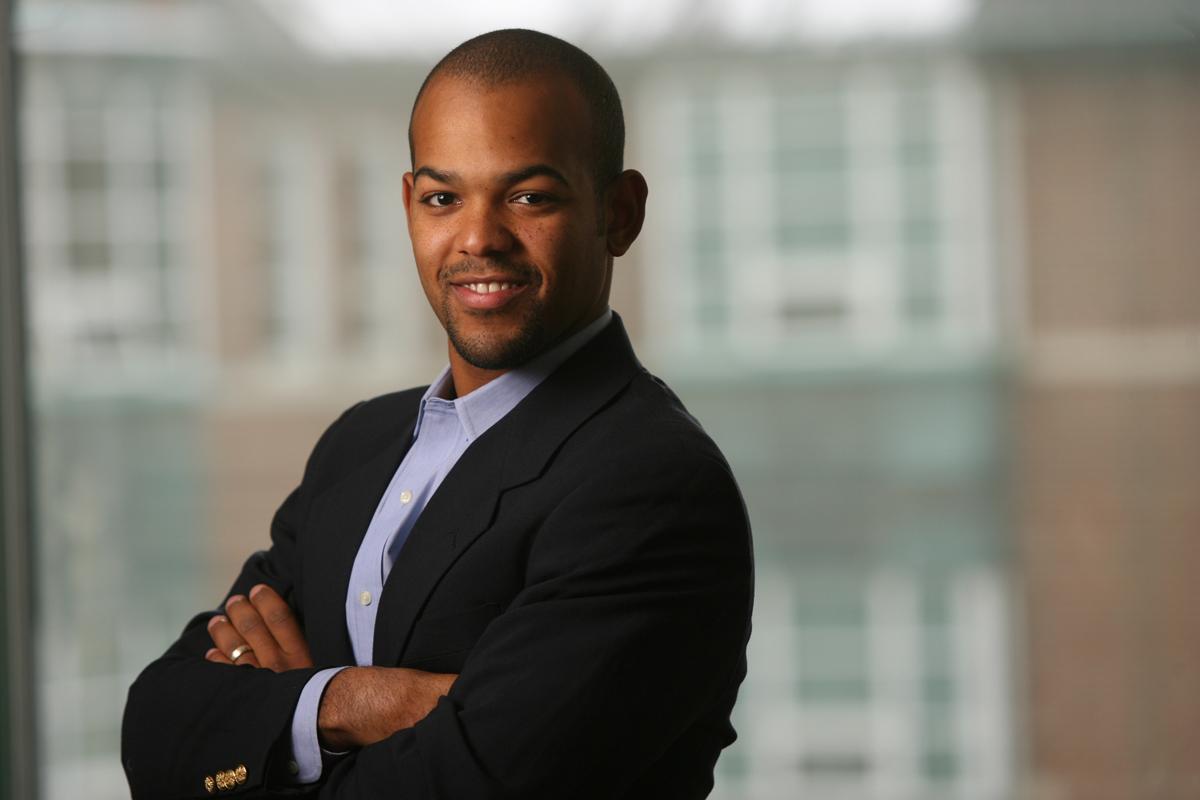
Jacques-Philippe Piverger T’07 has a one-word solution to this problem: Luci. It’s a low-cost, inflatable solar-powered lantern made by MPOWERD, the company he co-founded in 2012 with the mission to “eradicate energy poverty through solar justice.”
The elegant, innovative LED light is waterproof and weighs just four ounces. It’s powered by a lithium-ion battery and can illuminate 10 square feet for six to 12 hours, depending on the setting. Luci also, according to Piverger, has a personality. “It’s more than just a light,” he says. “When people living in Africa, India, and Southeast Asia get Luci, it literally changes their lives in meaningful ways.”
Making an impact in the developing world is not a stretch for Piverger, who has spent most of his summers visiting relatives in Haiti. That Piverger chose to make his impact through a startup is also not a surprise. At Tuck, he was a research fellow at the Center for Private Equity and Entrepreneurship, where he studied developed-market distressed investing and private equity opportunities in South Africa. After Tuck, Piverger worked for AIG Asset Management and PineBridge Investments while simultaneously founding two nonprofits. Piverger has intertwined that background by registering MPOWERD as a benefit corporation, a new type of entity that can have a double bottom line—making a profit and serving a societal mission. “One doesn’t have to get in the way of the other; they complement each other,” he says.
MPOWERD has already produced and distributed more than 200,000 Luci lanterns in 50 countries, through wholesalers and non-governmental organizations. The light has also proven popular in the U.S., where people buy it for outdoor activities, in-home lighting, and for emergency preparedness. The company conducted a “Give Luci” campaign during the 2013 Christmas shopping season, where purchasers could choose to buy another Luci for someone in need. The campaign provided 1,800 lights to communities in Africa, the Amazon, and the Philippines, as well as to girls in a United Nations refugee camp in Kenya. “It’s really exciting to know we’re working on something that makes sense business-wise, but also has a tangible impact on people and families,” Piverger says.
SALIL TRIPATHI T’85
The Institute for Human Rights and Business
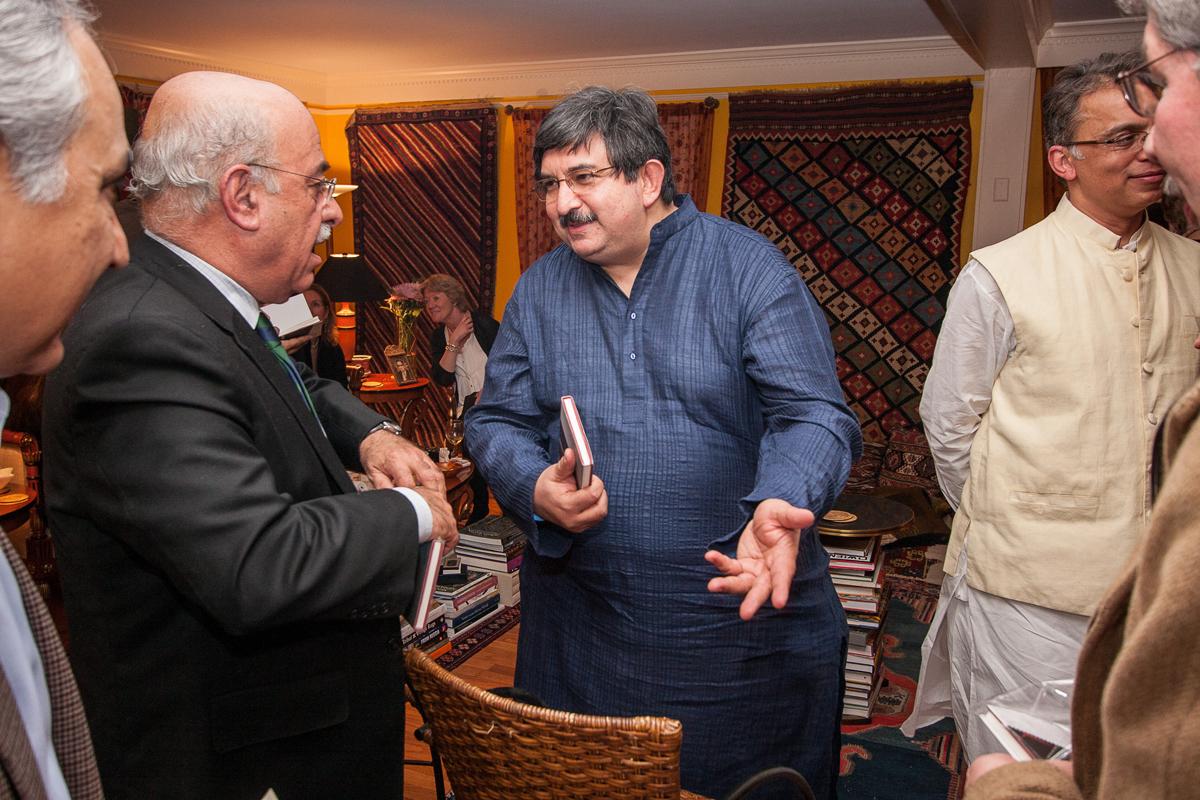
During his second winter in Hanover, on the night of Dec. 2-3, 1984, 27 tons of methyl isocyanate gas leaked from a Union Carbide pesticide plant in Bhopal, India. More than half a million people were exposed to the lethal gas. The official death toll was 2,259, though some sources claim 10 times that number perished.
The tragedy helped steer Tripathi to think more deeply about companies and their impact on society, leading him ultimately into a human rights career. He knew that the people living in the shanties of Bhopal had no voice to demand safer facilities. And, Tripathi realized, many in the business community were not aware of the abysmal living conditions in the areas near some of their facilities. As a student of business, he recognized that the way to prevent similar disasters in the future must include dialogue with industry.
When he graduated from Tuck and returned to India, Tripathi weighed two job offers. One was a well-compensated position in the commercial banking division of Citibank. The other was to become the opinion editor at a startup newspaper, writing about economics, politics, human rights, and culture. “I took the newspaper job, which must seem very, very odd for Tuck students.”
Tripathi eventually moved to Singapore, where he worked at the Far Eastern Economic Review, covering the dizzying rise of the Asian Tiger economies and the devastating economic collapse of 1997. “I saw the economic and social backslide. People who were used to a certain lifestyle suddenly becoming impoverished.”
About that time, Tripathi answered an advertisement in The Economist seeking an executive to develop a human rights and business program at Amnesty International in London. The job presented a challenge, and an opportunity to make a positive impact. At Amnesty, Tripathi represented the organization in critical negotiations that created multi-stakeholder initiatives, such as a regulatory mechanism to eliminate conflict diamonds from international trade, and a set of principles to govern the conduct of security forces guarding extractive industries.
Later, the former Irish President Mary Robinson, who had also been the high commissioner for human rights at the United Nations, helped set up the Institute for Human Rights and Business (IHRB), for which he was tapped, and where he is now director of emerging issues. The institute is something of a matchmaker for strange bedfellows, bringing together such diverse interests as corporate compliance officers, human rights activists, and government agencies. The group promotes research in an under-studied area—the relationship between human rights and corporate performance and impacts.
Tripathi has been particularly active in Colombia, the Niger Delta, and Burma, each of which has been the site of longstanding conflicts between local people and industry.
In such resource-rich conflict zones, Tripathi says, “the short-term solution is to get SAS-trained private security people to protect the facilities and its perimeter with an iron hand. But human rights violations are inevitable, and at some point that creates a cycle of violence and work stoppages, which cost a lot of money.” And in many cases, lead to lawsuits against companies—so it is in companies’ interest to take human rights risks seriously, not just the risks they face, but the risks they pose to communities.
Speaking in business terms, Tripathi urges industry leaders to take the long view. In Colombia’s Medeo Magdalena Basin, for example, Occidental Petroleum found a way to extract oil without displacing the local population. “The solution they came up with was to drill diagonally from outside the region. It was more costly, but in the company’s long-term calculation was preferable to forcing people to move and potentially creating lasting resentment.”
The challenge for Tripathi’s organization is persuading business that the more expensive option is often the best in the long-term. “Measuring the human rights impact for the bad things that did not happen is almost impossible,” he says.
Though difficult to quantify, the value is obvious to those in the field. One of IHRB’s initiatives is the Myanmar Center For Responsible Business, which offers guidance to businesses investing in Burma to operate responsibly, that is, by respecting human rights. One of their early activities was to organize a series of town hall-like dialogues between local people, government, and business.
At one such meeting, Tripathi recalls, “we had a very prominent Burmese minister speaking and making promises. As the session was ending the audience had a lot of questions. One elderly man put his hand up, a very humble man in a longyi. He began speaking very haltingly in Burmese. And he went on for a very long time.”
After a few minutes another member of the panel sent Tripathi a note, asking him if the old man could be told to make his point more quickly. It was hot and late in the day. Many important people from government, business, and civil society were there, some of them restless to leave. But Tripathi let the man speak.
“This is what Burmese people have waited 60 years to do—to hold their leaders to account by asking questions. I didn’t want to interrupt that process. I want to help that process,” Tripathi says. The man spoke for several more minutes. It didn’t necessarily resolve his grievance, but it gave him a voice.
TONY POSAWATZ T’86
Invictus iCAR
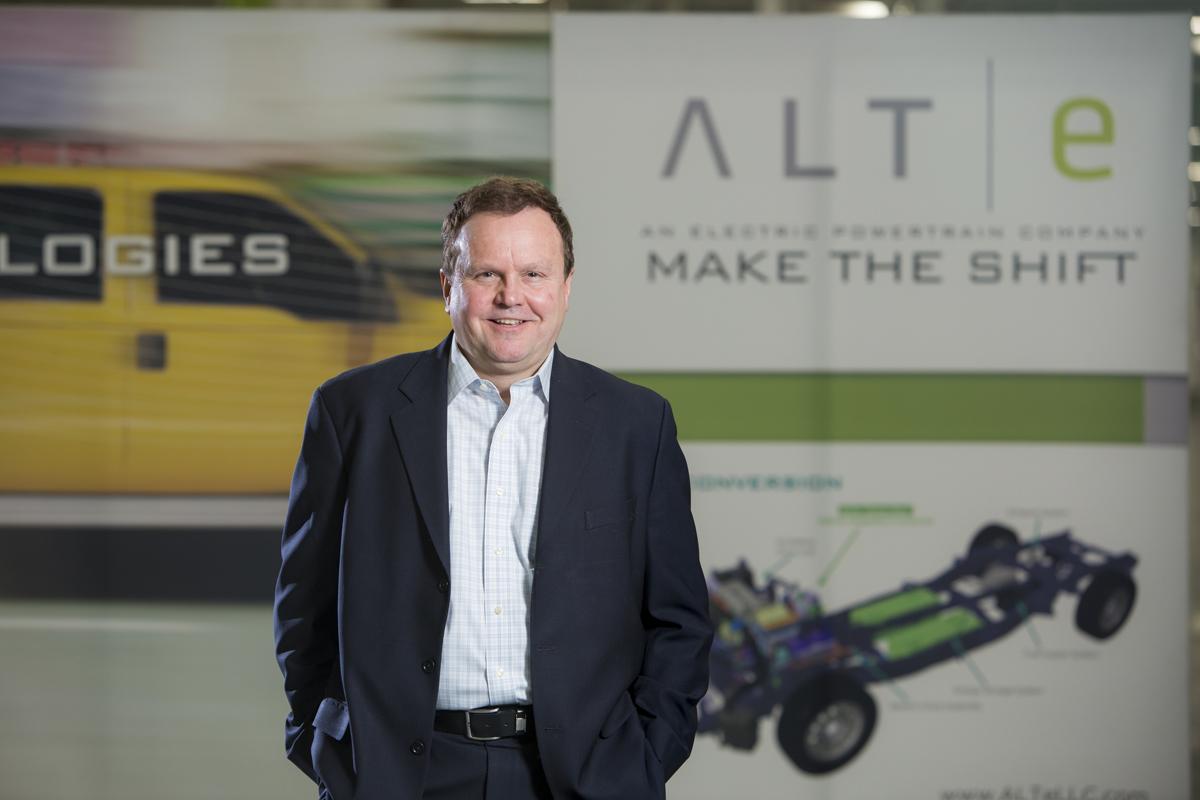
In the United States, stories like Posawatz’s are as ubiquitous as the cars that animate them. For every 100 Americans, there are roughly 80 automobiles—a higher rate of car ownership than anywhere else in the world. In China, the figure is 10 times lower but catching up fast (they, too, seek the freedom of mobility). It took the world more than 100 years to reach one billion automobiles; the next billion, owing to a growing middle class in developing nations, could tick by in just 25 years.
The trend presents a tough question: what will power all those new cars? There isn’t enough oil in the world to do it. Even if there was, the cost of gasoline would skyrocket and the environmental impacts of the greenhouse gas emissions would likely be catastrophic.
For Posawatz, this was more than an interesting problem; it was a huge business opportunity. From the late-1990s until 2005, Posawatz was the vehicle line director for GM’s full-size trucks, which had become a Fortune 20 business. In 2006, Bob Lutz, GM’s vice chairman, asked Posawatz to lead the company’s next major growth area: electric vehicles. “We chose electricity as the fuel because it’s inexpensive, omnipresent, domestic, and it has multiple sources, including renewables like solar and wind,” Posawatz says.
Four years later, after leading a team of almost 1,000 employees from across GM, Posawatz delivered the Chevrolet Volt. A battery-electric vehicle with a backup gasoline engine, the Volt is the only car produced in the U.S. to receive both the North American and European “Car of the Year” awards in the same year. Since then, Volts have been driven more than 400 million miles on electric power, more than most battery-electric vehicles. Surveys suggest that even though the Volt battery has a relatively short 40-mile range, the backup gasoline engine makes drivers feel more confident in their ability to use the car more often—they don’t experience “range anxiety,” a term that Posawatz coined after interviewing owners of GM’s first electric car, the EV1.
The experience developing the Volt has put Posawatz on a mission to make electricity the dominant form of propulsion for passenger cars and even trucks. Toward that end, Posawatz retired from GM in 2012—he was there for more than 30 years—and became the president and CEO of Fisker Automotive, maker of the sleek Karma electric roadster. Fisker had been struggling from a string of bad luck and inconsistent financing, and Posawatz helped lead the turnaround effort that culminated in the sale of the company’s Department of Energy loan to new owners.
Most recently, Posawatz formed Invictus iCAR, a company that consults with firms across the electric vehicle industry. One such firm is Momentum Dynamics, which is developing high-power wireless charging pads. Another is ALTe Technologies, which integrates electric drive into existing commercial vehicles.
Many challenges remain. Battery technology must improve substantially to increase vehicles’ range while lowering their cost. Vehicles must lighten up. Charging infrastructure will have to be developed. The electric grid needs to integrate with vehicles. “We won’t figure all this out in five or 10 years,” Posawatz says. “It’s going to be a long time. But when a problem is staring you in the eye, the best thing to do is stare back and deal with it. It is exciting to work on solutions for the future. After all, my children and generations to come will be spending the rest of their lives there.”